
Nineteenth-Century Art Worldwide
Scope & Guideline
Innovating Perspectives on Nineteenth-Century Visual Culture
Introduction
Aims and Scopes
- Interdisciplinary Art Historical Research:
The journal emphasizes a multidisciplinary approach, incorporating perspectives from history, literature, sociology, and cultural studies to provide a nuanced understanding of nineteenth-century art. - Focus on Gender and Identity:
There is a notable focus on gender studies and identity in art, reflecting on the roles and representations of women artists and subjects within the nineteenth-century artistic landscape. - Global and Transnational Perspectives:
The journal encourages exploration of art beyond Western contexts, highlighting international collaborations and the influence of colonialism and cultural exchange on artistic practices. - Art and Society:
Papers often investigate the relationship between art and societal issues, such as politics, class, race, and identity, revealing how art functions as both a reflection and a critique of its time. - Material Culture and Artifacts:
The journal also delves into the study of material culture, examining how objects, collections, and the art market shaped the artistic narrative of the nineteenth century.
Trending and Emerging
- Intersectionality in Art:
There is a growing trend towards intersectional studies that examine how various identities—such as race, gender, and class—interact within the context of art, offering a more comprehensive understanding of the artistic milieu. - Decolonization and Postcolonial Studies:
Emerging themes related to decolonization and postcolonial critiques are gaining traction, as scholars explore the implications of colonial histories on art production and reception. - Environmental and Ecological Perspectives:
Recent publications reflect an increasing interest in environmental themes, considering how art of the nineteenth century engages with nature and ecological concerns, particularly in light of contemporary environmental crises. - Digital Humanities in Art History:
There is a noticeable rise in the use of digital humanities methodologies, utilizing technology to analyze and disseminate research on nineteenth-century art, making it more accessible and interactive. - Art and Globalization:
Papers are increasingly addressing the implications of globalization on art practices, exploring how global exchanges and movements influenced the creation and perception of art during the nineteenth century.
Declining or Waning
- Traditional Art Historical Narratives:
There seems to be a decline in works focusing strictly on traditional art historical narratives that center on major figures or movements without engaging with broader social contexts or interdisciplinary approaches. - Eurocentric Perspectives:
Papers that predominantly focus on European art and artists, without acknowledging the global influences or transnational dialogues, are becoming less prevalent, indicating a shift towards more inclusive scholarship. - Formalism in Art Analysis:
There is a noticeable reduction in the emphasis on formalist analysis that prioritizes aesthetic qualities over contextual factors, as contemporary scholarship increasingly values cultural and historical significance. - Biographical Studies of Individual Artists:
While individual artists continue to be studied, there is a waning interest in purely biographical approaches that do not connect the artist's work to broader social or political themes. - Static Interpretations of Artworks:
The journal has seen fewer contributions that offer static interpretations of artworks, moving instead towards dynamic discussions that consider the evolving meanings and receptions of art over time.
Similar Journals
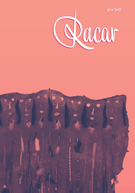
RACAR-REVUE D ART CANADIENNE-CANADIAN ART REVIEW
Advancing Critical Discourse on Canadian ArtRACAR - Revue d'Art Canadienne (Canadian Art Review), published by the University Art Association of Canada, stands as a pivotal academic journal in the field of Canadian art history and cultural studies. With its ISSN 0315-9906 and E-ISSN 1918-4778, RACAR serves as a vital platform for scholarly research and discourse, aiming to illuminate the rich tapestry of Canada's artistic heritage. Although not an open-access journal, it is committed to disseminating high-quality peer-reviewed articles that contribute to the ongoing dialogue about art in Canada. The journal's focus encompasses a diverse range of topics, from contemporary visual arts to historical investigations, appealing to researchers, professionals, and students alike. Based at the Department of History in Art at University of Victoria, RACAR fosters a critical understanding of Canadian art within broader national and global contexts, making it an essential resource for anyone engaged in this vibrant field of study.
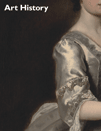
ART HISTORY
Unveiling the Complexities of Visual and Performing ArtsART HISTORY is a prestigious journal published by Wiley, focusing on the dynamic and diverse field of visual arts and performing arts since its inception in 1978. With an ISSN of 0141-6790 and an E-ISSN of 1467-8365, the journal has established itself as a significant resource for researchers, professionals, and students interested in exploring the complexities of art across various epochs and cultures. Currently ranked in the Q3 category within the Visual Arts and Performing Arts sector and positioned at #132 out of 667 in Scopus rankings—representing the top 80th percentile—ART HISTORY delivers insightful scholarship that contributes to the understanding and appreciation of art history. Although it does not offer open access, the journal remains committed to publishing high-quality, peer-reviewed articles that delve into critical artistic practices, theories, and aesthetics. The journal's location in the United Kingdom further enhances its international reach and influence, making it a vital platform for advancing discourse in the arts.
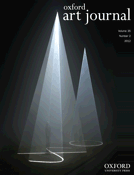
OXFORD ART JOURNAL
Connecting Scholars to the World of ArtOxford Art Journal, published by Oxford University Press, serves as a vital platform for scholarly discourse in the fields of History, Visual Arts, and Performing Arts. With an ISSN of 0142-6540 and an E-ISSN of 1741-7287, this esteemed journal has cultivated a rich academic presence since its inception, reflecting a deep commitment to exploring the intricacies of art history and contemporary visual culture. Holding a Q2 ranking in Visual Arts and Performing Arts and a Q3 ranking in History for the year 2023, the journal features rigorous peer-reviewed articles that push the boundaries of research and offer new insights into artistic practices. Although not offering open access, the journal is widely respected for its contributions to the academic community, making it invaluable for researchers, professionals, and students deeply engaged in art studies. For those seeking a comprehensive understanding of the visual arts landscape, the Oxford Art Journal remains an indispensable resource.

RIHA Journal
Exploring the intersections of visual and performing arts.RIHA Journal, an esteemed publication in the field of Visual Arts and Performing Arts, is published by the RIHA-INT ASSOC RESEARCH, INST HISTORY ART in Germany. Since its inception in 2010, this Open Access journal has aimed to foster scholarly discussion and dissemination of research within art history and related disciplines. With a commitment to providing a platform for innovative and interdisciplinary approaches, RIHA Journal is easily accessible to a global audience, encouraging researchers, professionals, and students alike to engage with cutting-edge scholarship. Despite its current position within the Q4 category and a Scopus rank of #402 out of 667, the journal's role is increasingly pivotal as it continues to expand its reach and impact within the academic community. Located at the Central Institute for Art History in Munich, Germany, RIHA Journal is dedicated to enriching the study of art history from 2010 to 2024 and beyond, paving the way for future explorations and discussions in the visual arts.
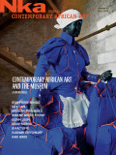
Nka-Journal of Contemporary African Art
Advancing Critical Discourse in African Artistic PracticesNka-Journal of Contemporary African Art is a premier academic publication dedicated to exploring the rich tapestry of contemporary African art and its intersections with culture, society, and identity. Published by DUKE UNIVERSITY PRESS, this journal offers a platform for critical discourse and innovative research within the fields of Visual Arts and Anthropology, earning a commendable ranking in both categories, with a Q2 designation in Visual Arts and Performing Arts. Established in 2019, Nka serves to illuminate the dynamic and evolving narratives of African artists, providing a vital connection for scholars and practitioners engaged with African cultural production. Although currently not open access, the journal aims to foster intellectual engagement and promote inclusivity in the arts, making it an essential resource for those seeking to deepen their understanding of contemporary African artistic practices. With an address based in the heart of Durham, North Carolina, Nka invites contributions from a diverse range of voices to enrich the discourse surrounding contemporary African art.

Boletin de Arte-UMA
Connecting Scholars to the Pulse of Artistic InnovationBoletin de Arte-UMA is a distinguished academic journal published by the University of Malaga, Department of History of Art, focusing on the rich interplay between history, visual arts, and performing arts. Operating under an Open Access model since 2013, this journal ensures that valuable research is freely available for scholars and practitioners worldwide. With an impact factor currently reflecting its academic rigor through its Q2 ranking in History and Q1 ranking in Visual Arts and Performing Arts, Boletin de Arte-UMA serves as a vital platform for cutting-edge research, critical analysis, and the promotion of cultural heritage studies. Based in Malaga, Spain, the journal not only provides insights into its thematic scope but also fosters a global dialogue among researchers, professionals, and students passionate about the visual and performing arts.

Wacana Seni-Journal of Art Discourse
Exploring the Intersection of Art and Discourse.Wacana Seni-Journal of Art Discourse, published by Penerbit Universiti Sains Malaysia, is a premier academic journal that has been a pivotal platform for the exploration and engagement of interdisciplinary studies within the fields of Cultural Studies, Music, and Visual Arts and Performing Arts. With its ISSN 1675-3410 and E-ISSN 1985-8418, the journal has established itself as an influential resource since its inception in 2011, now spanning up to 2023. Recognized in the Q2 category within multiple disciplines, Wacana Seni ranks impressively among its peers, reflecting its commitment to high-quality research, as evidenced by its admirable rankings within Scopus. The journal aims to foster dialogue and disseminate cutting-edge scholarship that enhances the understanding and appreciation of art in its myriad forms, thus inviting contributions from researchers, professionals, and students alike to further enrich the discourse in the arts. Based in Penang, Malaysia, and committed to open access, Wacana Seni serves as a vital conduit for knowledge exchange within the global art community.

GOYA
Cultivating Insights into Cultural DiscourseGOYA, published by the esteemed FUNDACION LAZARO GALDIANO, is a pivotal journal in the field of Visual Arts and Performing Arts. With an ISSN of 0017-2715, this Spanish journal serves as a critical platform for scholars, artists, and practitioners to engage with contemporary issues, trends, and methodologies in the arts. Since its inception, GOYA has strived to illuminate the intersection of artistic expression and cultural discourse, with coverage spanning from 2002 to 2024. The journal proudly holds a Q3 category ranking in the 2023 Scopus assessments for its field, reflecting its respected position among peers, with a notable rank of #377 out of 667. Though it does not follow an Open Access model, GOYA continues to contribute significantly to the academic landscape, enabling a deeper understanding of artistic practices and their societal implications. Researchers and students alike will find the journal an invaluable resource for insights and inspiration within the dynamic realm of the arts.
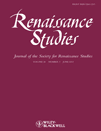
Renaissance Studies
Unveiling the Legacy of a Transformative EraRenaissance Studies, published by Wiley, stands as a vital academic platform within the disciplines of Cultural Studies, History, Literature and Literary Theory, Religious Studies, and Visual Arts and Performing Arts. With an impressive history of publication spanning from 1987 to 2024, this journal is recognized in 2023 metrics as a Q2 journal in four categories and Q1 in Literature and Literary Theory, reflecting its substantial impact in promoting interdisciplinary dialogue and research. The journal's robust Scopus rankings further underscore its relevance, including a position in the 83rd percentile in Literature and Literary Theory. Although not an open-access journal, it provides readers and contributors with access to curated, high-quality scholarship that explores the complexities of the Renaissance and its enduring influence on contemporary thought and culture. Researchers, professionals, and students alike will find Renaissance Studies invaluable in fostering discussions that bridge historical context with modern inquiry.

Experiment-A Journal of Russian Culture
Advancing Insights into Russia's Cultural LandscapeExperiment-A Journal of Russian Culture is a distinctive publication dedicated to exploring the multifaceted dimensions of Russian culture, encompassing literature, art, and social history. Published by BRILL, a respected name in academic publishing, this journal provides a platform for original research and insightful discourse, fostering a deeper understanding of Russia's rich cultural heritage. With an ISSN of 1084-4945 and an E-ISSN of 2211-730X, the journal is organized in a quarterly format, although it has seen varied publication years from 1996 through 2023. While it currently holds a Q4 ranking in both Cultural Studies and Visual Arts and Performing Arts, its commitment to interdisciplinary inquiry makes it a vital resource for researchers, professionals, and students interested in contemporary and historical Russian cultural phenomena. Despite its modest impact factors, the journal remains an essential platform for the dissemination of critical perspectives and theoretical frameworks, contributing to the ongoing dialogue about Russian identity and its artistic representations. The journal is available in print and may have limited digital access options, making it all the more precious for collectors and libraries committed to cultural studies.